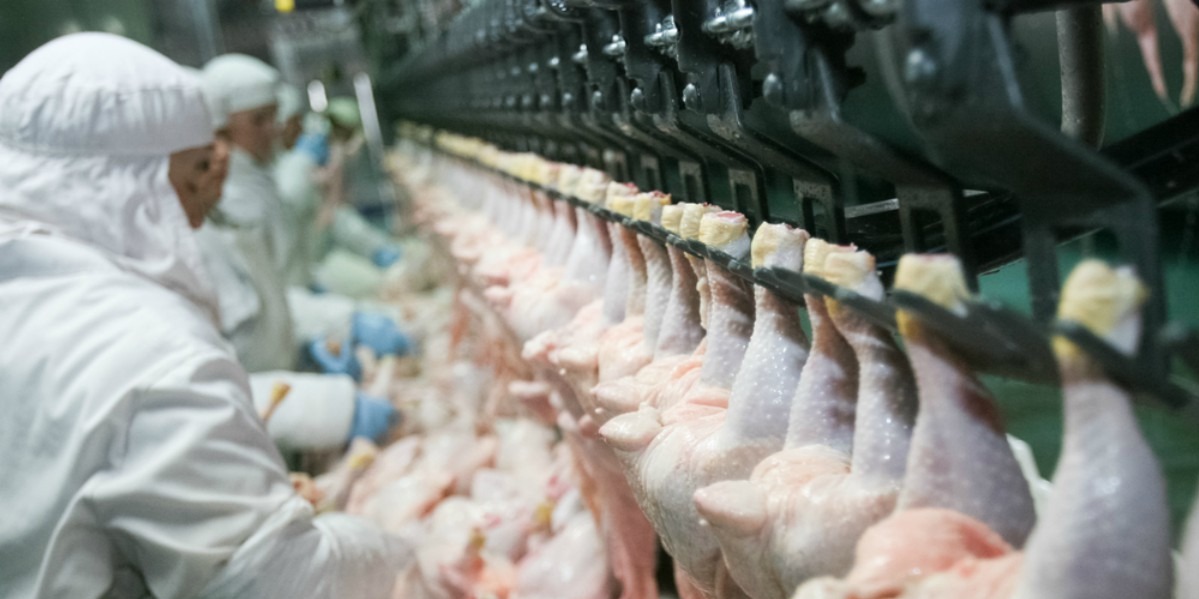
Meat very much in demand as FAO forecasts rise in poultry production this year
The world’s meat production is forecast to fall for the second year in a row but not because of poultry, according to the Food and Agriculture Organization of the United Nations.
In the June release of its biannual Food Outlook report, the FAO forecasts poultry meat production to increase by 2.4% to 136.8 million tonnes.
The only other meat FAO sees rising in production this year is ovine, from 16 million tonnes in 2019 to 16.2 million tonnes this year.
However, global meat production will fall by 1.7% to 333 million tonnes because of a sharp drop in pig meat and bovine.
Pig meat production is forecast to fall by 8% to 101 million tonnes. FAO says this is largely concentrated in Asian countries affected by the African swine fever viral disease.
Bovine meat production is expected to drop by 0.8% to 72 million tonnes, with a large proportion of this from the USA and Australia.
FAO said the pace of expansion of all meat sectors has been negatively affected by COVID-19 market disruptions.
BIGGEST PRODUCERS
“The expected global rise in demand for meat imports is forecast to be met mainly through increased exports by Brazil, the USA, the European Union 27 member countries (EU) and the United Kingdom of Great Britain and Northern Ireland (the UK),” said the FAO.
In Brazil, the world’s largest halal meat exporter, sales to international markets are expected to grow by 6% this year, spurred by strong demand for bovine, pig and poultry meats from China and new accreditations of meat plants.
In the halal sector, FAO sees better compliance with halal requirements as a likely factor to improve Brazil’s access to meat markets in the Middle East.
|
READ ALSO India's beef exporters face massive loss in first quarter due to lockdown |
MORE POULTRY
The U.N. agency anticipates increases in poultry meat production from China, the EU, the UK, Brazil and Mexico.
Production will fall in India, Thailand, Turkey and the USA, it said.
Brazil, the world’s largest exporter of halal poultry meat, is expected to meet high import demand.
LESS BEEF
Production of bovine meats this year will fall following five years of continuous growth.
“This rather frail outlook principally reflects projected contractions in six of the world’s leading bovine meat producers, namely the USA, Australia, India, South Africa, the EU and the UK and New Zealand, which will outweigh projected expansions elsewhere, particularly in China and Brazil,” said the FAO.
In Australia and New Zealand, which have substantial halal bovine meat exports, cattle available for slaughter has been limited by large drought-induced offtakes last year, which brought herd numbers to historic lows.
In India, where almost all bovine exports are in the form of buffalo, and halal, output is set to fall due to the prolonged COVID-19 lockdowns.
Trade in bovine meats are forecast to be around 11 million tonnes this year, 1% down from last year. In 2019, the sector grew by 7.3%.
FAO said import growth is anticipated to weaken in almost all bovine meat markets as widespread economic downturn curtains consumption in middle- and low-income households. At the same time, lockdowns and physical distancing reduce foodservices.
MEAT TRADE SLOWS
The international meat trade is expected to grow to 37 million tonnes this year, up 2.4% from 2019.
This is “considerably slower”, said the FAO, than the 6.8% registered last year.
In large part, this is a reflection of a possible reduction in world meat consumption, which the U.N. body sees at 2.8% lower, at a per capita of 42.4 kilograms/year this year compared to 43.6 kg/year in 2019.
Growth in meat trade is also likely to be restrained by logistical bottlenecks, limitations in shipping and port backlogs.
Where there is growth, China is anticipated to provide much of the momentum, with imports seen rising 24% year-on-year.
%2010%20Islamic%20countries%20meat%20imports.png)
MEAT DEMAND
This year, COVID-19 lockdowns, physical distancing and market closures resulted in substantially reduced food service sales such as in restaurants, airline catering, universities, and schools.
This has led to excess supplies of meat that have only partially been offset by increased retail sales, according to the FAO.
The loss of food service sales is particularly severe in urbanized countries with high out-of-home consumption levels and large service sectors, particularly tourism.
“Although the surge in retail sales, driven by panic buying, temporarily boosted consumer meat prices, the job losses and economic hardships associated with the health crisis are eventually likely to result in curtailed meat purchases and consumption, a further accumulation of stocks and excess export availabilities,” said FAO in its report.
In the meantime, logistical bottlenecks and port backlogs have been reported as barriers to trade flows, causing international meat prices to fall sharply.
© SalaamGateway.com 2020 All Rights Reserved
